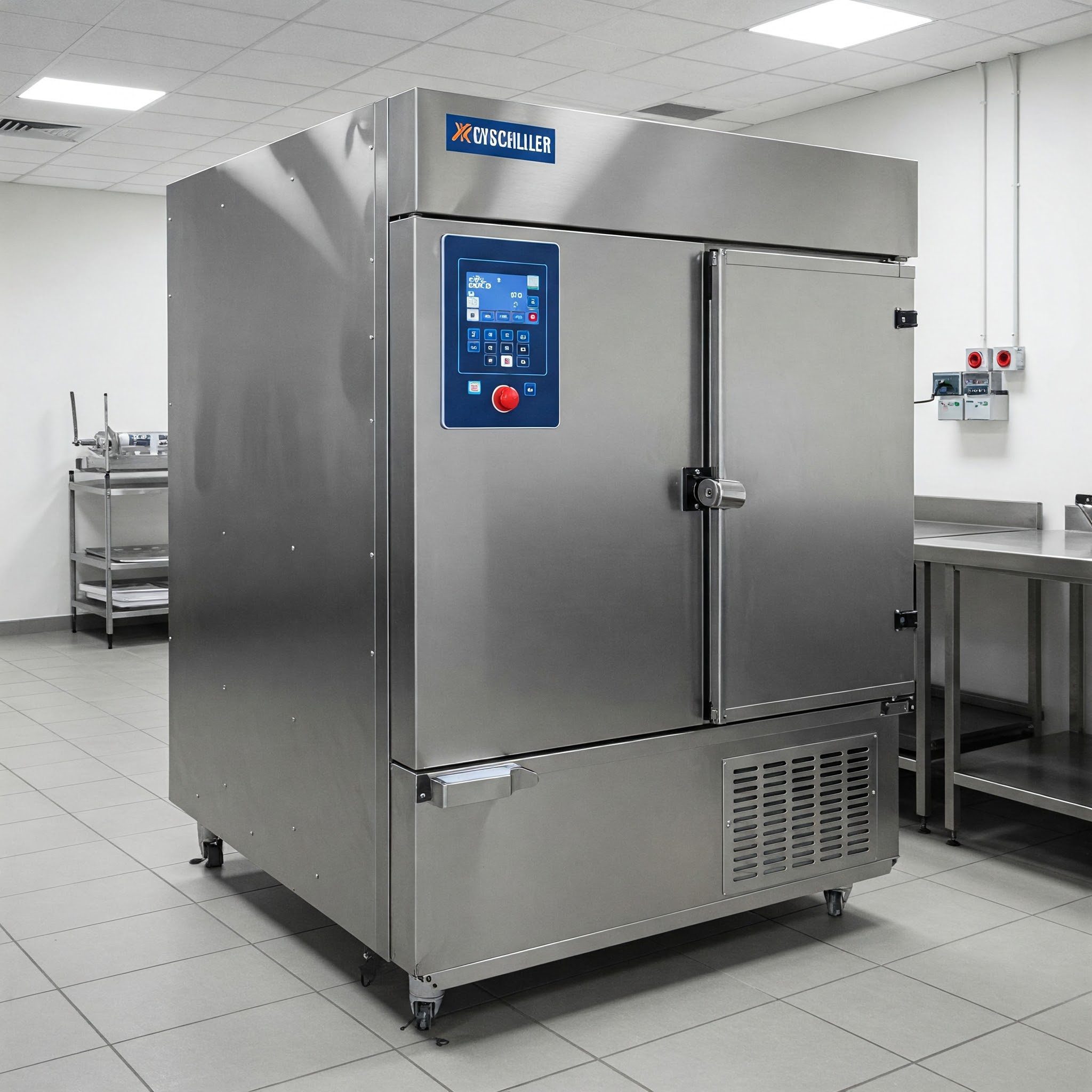Blast Chillers: Rapid Cooling for Food Safety and Quality
Blast chillers are essential refrigeration units designed to rapidly cool food, preserving freshness, texture, and safety by minimizing bacterial growth. Commonly used in commercial kitchens, catering businesses, and food production facilities, these chillers help meet food safety standards while improving efficiency.
What Are Blast Chillers?
Blast chillers are high-powered refrigeration units that quickly lower the temperature of cooked or fresh food, reducing the risk of bacterial contamination. Unlike standard refrigerators, which cool food slowly, blast chillers can lower food temperatures from 70°C (158°F) to 3°C (37°F) in under 90 minutes, significantly improving food safety and shelf life.
Key Features of Blast Chillers (Continued)
- Precise Temperature Control
- Digital controls allow operators to set and monitor temperatures accurately.
- Energy Efficiency
- Designed to cool food quickly while using minimal energy.
- Multiple Size Options
- Available in countertop, under-counter, and large-capacity models for different kitchen sizes.
- Food Safety Compliance
- Meets HACCP (Hazard Analysis and Critical Control Points) guidelines for safe food handling.
- Automatic Cycles
- Programmable settings for different food types ensure consistent chilling results.
- Stainless Steel Construction
- Durable and easy to clean, meeting hygiene standards.
Types of Blast Chillers
1. Reach-In Blast Chillers
- Compact models ideal for small kitchens and restaurants.
- Suitable for chilling smaller batches of food.
2. Roll-In Blast Chillers
- Designed for high-volume kitchens and catering services.
- Accommodates large trays and racks for bulk chilling.
3. Undercounter Blast Chillers
- Space-saving models that fit under worktops for easy access.
4. Shock Freezers (Blast Freezers)
- Capable of chilling food to freezing temperatures for long-term storage.
Applications of Blast Chillers
- Restaurants and Hotels
- Quickly cools prepared dishes for safe storage and later service.
- Catering Businesses
- Ensures food remains fresh while transporting to events.
- Bakeries and Pastry Shops
- Rapidly cools baked goods and desserts to maintain texture.
- Hospitals and Institutional Kitchens
- Helps preserve meals while maintaining food safety standards.
- Food Processing and Manufacturing
- Used for pre-packaged meals and frozen food production.
Benefits of Blast Chillers
- Prevents Bacterial Growth
- Rapid cooling prevents food from staying in the danger zone (5°C to 60°C / 41°F to 140°F) where bacteria thrive.
- Improves Food Quality
- Preserves texture, moisture, and flavor by reducing ice crystal formation.
- Reduces Food Waste
- Extends shelf life and minimizes spoilage.
- Increases Kitchen Efficiency
- Enables pre-preparation of meals, reducing service time.
- Meets Food Safety Regulations
- Essential for HACCP compliance in commercial kitchens.
- Versatile Usage
- Suitable for cooling a wide range of foods, from soups and sauces to meats and seafood.
Choosing the Right Blast Chiller
- Capacity Needs
- Determine the volume of food you need to chill at once.
- Cooling Speed
- Consider models with fast chilling cycles for high-demand kitchens.
- Size and Space Availability
- Choose between undercounter, reach-in, or roll-in models based on kitchen layout.
- Control Panel and Automation
- Opt for digital displays with programmable settings for ease of use.
- Energy Efficiency
- Look for eco-friendly refrigerants and energy-saving features.
- Multi-Functionality
- Some units include both chilling and freezing options for added versatility.
Maintenance Tips for Blast Chillers
Daily Maintenance
- Clean the Interior: Wipe down stainless steel surfaces to maintain hygiene.
- Check Door Seals: Ensure tight sealing to maintain efficiency.
Weekly Maintenance
- Inspect Temperature Settings: Verify proper operation for food safety compliance.
- Remove Ice Buildup: Defrost if necessary to maintain consistent airflow.
Monthly Maintenance
- Clean Condenser Coils: Remove dust and debris to improve efficiency.
- Check Drainage System: Ensure proper water drainage to prevent leaks.
Annual Maintenance
- Professional Inspection: Have a technician inspect and service refrigeration components.
- Replace Worn Parts: Update seals, fans, and filters as needed.
Troubleshooting Common Issues
- Chiller Not Cooling Properly
- Cause: Blocked vents or overloaded unit.
- Solution: Clear vents and reduce food load for better airflow.
- Excessive Ice Formation
- Cause: High humidity or frequent door opening.
- Solution: Defrost the unit and minimize unnecessary door openings.
- Unusual Noises
- Cause: Loose components or compressor issues.
- Solution: Tighten parts or contact a technician for servicing.
- Slow Chilling Time
- Cause: Dirty condenser coils or poor ventilation.
- Solution: Clean coils and ensure proper airflow around the unit.


